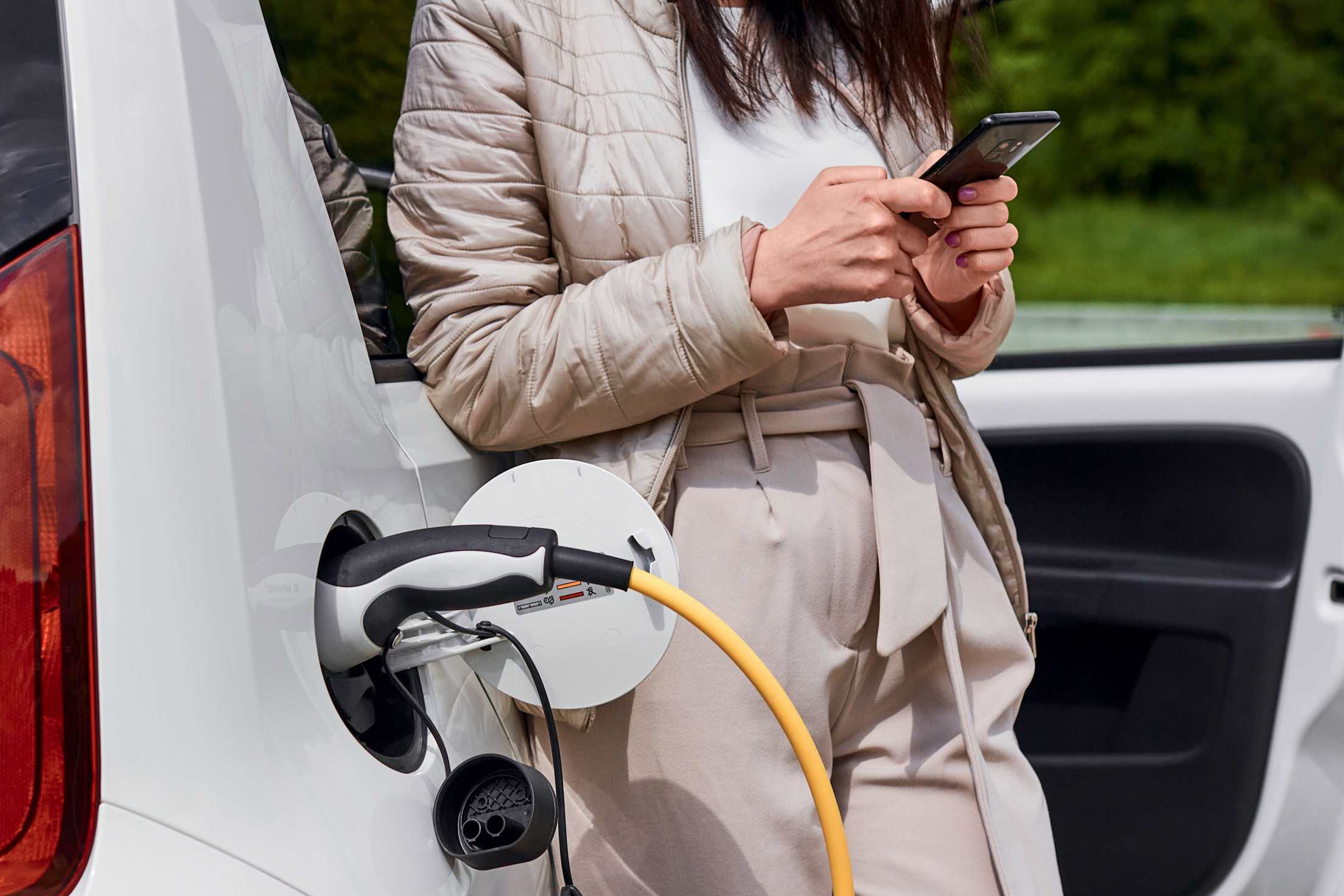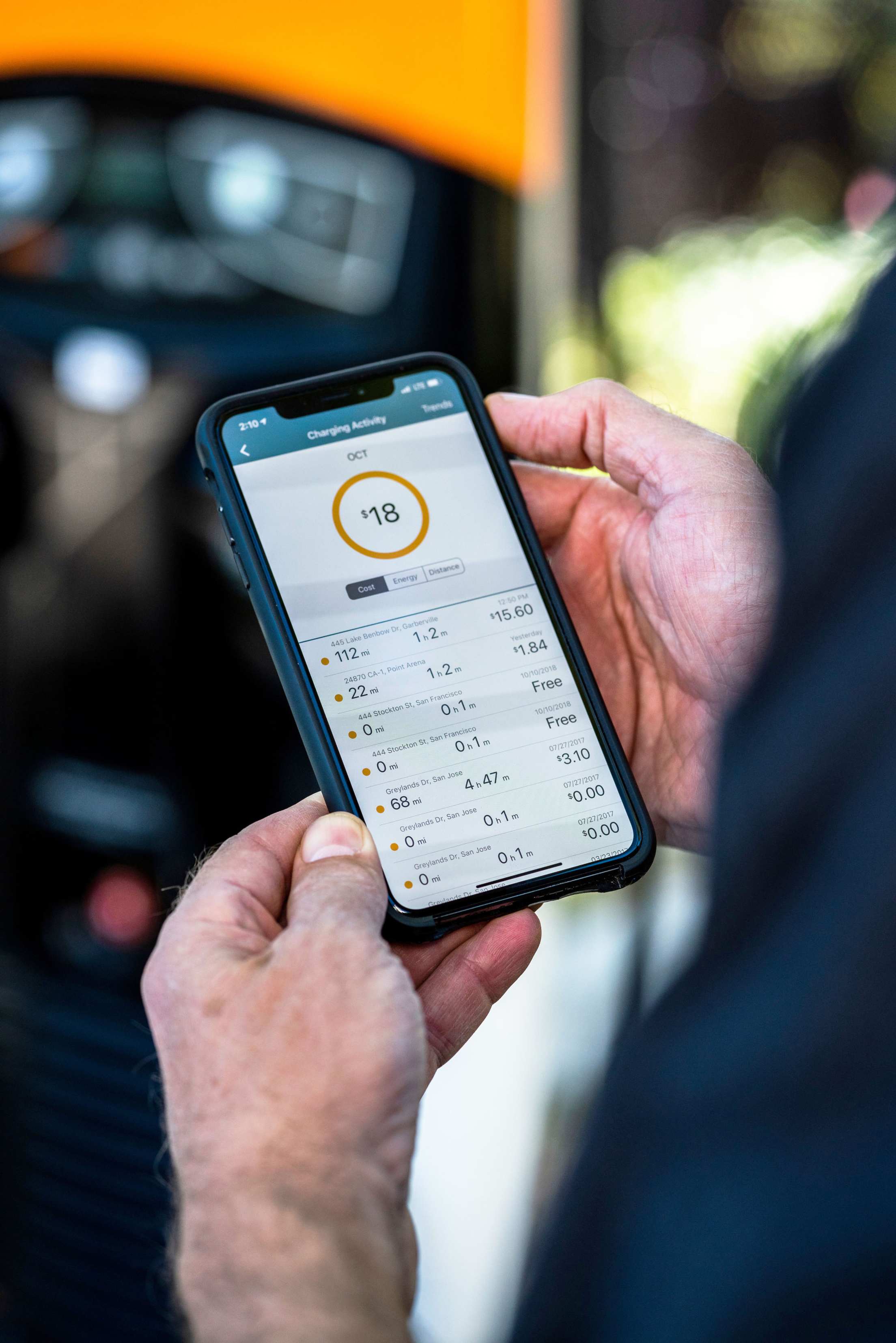
Buying an Electric Car? Here's What to Look For
EVs are flooding the market, but how do you find the right one for you?

If you’re thinking about buying an electric car, you’re not alone. Amid soaring gas prices and growing environmental concerns, the demand for electric, hybrid, and plug-in hybrid vehicles is surging, too. Throw in government incentives to tempt consumers, and you can understand why two-thirds of Americans said in a recent Consumer Reports survey that they are interested in acquiring an EV.
Purchasing a car has always been a big decision, but shopping for an EV comes with a unique set of considerations and some new terminology. To help you navigate this fast-emerging sector, here’s what to consider when buying an EV.
Hybrid vs. Plug-in Hybrid vs. Fully Electric
As the name suggests, a hybrid draws on two types of power: a gasoline engine and at least one electric motor. In some hybrids, these sources are connected to a shared transmission. In others, the gasoline engine powers the electric motor, which in turn propels the car. But in every case, it’s a joint effort, says Matt Alfano, vice president of mobility innovation at A3 Ventures, an innovation lab run by AAA. Though a hybrid doesn’t run on outside electricity (you can’t charge it; you must fill up at the pump), the boost it gets from its electric motor leads to better gas mileage than you would get in a vehicle powered by an internal combustion engine alone.
Whereas a hybrid runs primarily on gas, shifting to electric when it’s most efficient, a plug-in hybrid allows you to drive in full electric mode for a distance, typically 20 to 50 miles, and at any speed before it switches between the gas and electric engine as needed. Most plug-ins have enough electric range to cover shorter commutes and errands around town without needing the gas engine, making them a popular choice for consumers who are keen to drive an electric car but want a gasoline backup for longer trips.
Electric vehicles or EVs, are exactly that: They run on electricity alone, and they must be plugged in to be recharged. Thanks to increasingly efficient battery packs, EVs have advanced by leaps and bounds in recent years, with leading models on the market now boasting a range of 300 miles or more with each full charge.

The How-Tos of Charging
There are three main types of charging systems: Level 1, Level 2, and Level 3. Each has its own capabilities and costs.
Level 1 works with any standard three-prong household outlet, like the kind you’d use to plug in a laptop or a blender. If you’ve ever seen an extension cord running from a home to a car parked outside, that’s Level 1. While Level 1 is the cheapest way to charge, it’s also the slowest. It provides around four to six miles for every hour of charging and may take more than 14 hours to fully charge a car.
A Level 2 system has more than double the voltage of a Level 1. It can fully charge an EV in about four to six hours. You can have a Level 2 system installed at home, but unless you’re a certified electrician, you’ll need to hire a professional to do the job, as it requires a dedicated 240-volt circuit, like the kind used for a dryer. Installation prices vary widely, but the general range is around $400 to $1,200.
Level 3 chargers—also known as fast chargers—cost tens of thousands of dollars, and they’re not yet practical for home installation. You’re more apt to find them at rest stops and fueling stations along well-traveled highways, often with a Tesla attached to them. Level 3 systems can add up to 200 miles of range per hour of charging, which is up to 15 times faster than a Level 2 charger. They are the fastest way to charge, but they are also usually the most expensive to use.
Because not all chargers use the same cords and adapters, it’s wise to map out the locations of compatible charging stations before you set off on a long road trip. Apps such as ChargeHub make it easy to search for chargers in any city or state to help determine what types are available in that area.

How to Calculate Savings
Just as the price of gas fluctuates from city to city, and even from fueling station to fueling station, the cost of electricity varies depending on where you live, the type of charging system you’re using, and the time of day you’re plugging in. Charging at home is generally less expensive than charging on the road. Charging at non-peak hours, when electricity may be cheaper, is another way to save, as is having solar panels installed at home.
Even the amount of charge in your battery makes a difference. The most efficient time to charge is when the battery is 20 to 80 percent full, Alfano says; when the battery is nearly depleted or close to full, charging efficiency drops.
The federal government maintains a website—fueleconomy.gov—that offers a wealth of information on vehicle fuel efficiency, including comparisons across a range of makes and models. But individual cases can vary widely, so to get a better gauge on what you stand to save by switching to an EV, you need to do some math.
“It isn’t complex calculus,” says Matt Degen, senior editor at Kelley Blue Book. “But you need to know what you’re paying for electricity, and what you’d be paying for gas in your area.”
While there isn’t a one-size-fits-all answer, Kelley Blue Book has run the numbers and found that the owner of an EV who drives the national average of 14,000 miles a year would pay about $60 a month to charge their car, compared to about $180 to fill up a fuel-efficient conventional car with gas. By that measure, powering an EV costs about three times less than fueling a traditional vehicle.
Tax Credits and Rebates
Buy an EV and you could get some money back. How much depends on the fine print in the law. For EVs purchased after December 31, 2022, the federal government offers up to $7,500 in consumer tax credits—and up to $4,000 for the purchase of a used EV. But whether you qualify hinges on a range of factors, including your income level, the price of the vehicle, and how and where the vehicle was assembled.
The Inflation Reduction Act, signed into federal law this summer, sets an eligibility price cap of $80,000 per vehicle for vans, SUVs, and pickups, and $55,000 for other vehicles. The annual income cap is $150,000 for a single earner, and $300,000 per household. The new legislation also requires that a certain percentage of the battery be sourced and assembled in the United States, among other manufacturing criteria.
State and local governments and some utilities offer a range of tax credits and rebates as well, but those can vary from one municipality to the next. Potential benefits abound, but getting a handle on them may take some homework. “As a consumer,” Degen says, “you’re ultimately going to have to do a lot to educate yourself.”

How Much EV Can You Afford?
Buying a car is one thing. Owning and operating it is another. To assess your budget, you need to consider the costs of both. EVs don’t always come cheap, so part of the calculation is weighing a higher up-front sticker price against what you stand to save on fuel and maintenance over time.
As outlined above, those savings depend on a range of factors, including the cost of gas and electricity in your area and the type of charging system you use. Like almost every car, EVs start depreciating the moment you drive them off the lot, though some models, such as Teslas, retain their value relatively well.
Also worth considering is that since they have fewer moving parts, EVs are generally lower maintenance, with no need to change the oil, flush the radiator, or replace the spark plugs, among other services that are standard for traditional cars. AAA has found that the annual maintenance cost for an EV is about two-thirds that of a gas-powered vehicle.
The biggest maintenance cost for an EV is replacing the battery, which runs about $10,000. How often batteries need replacing used to be a greater source of uncertainty and unease than it is today. As the technology has improved, battery life spans have gotten longer and more predictable, with the average battery pack lasting from 10 to 20 years and up to 200,000 miles, according to a survey by Consumer Reports.
What can you afford? It’s not an exact science. “There is no golden rule,” A3 Venture’s Alfano says. “You need to think of the total cost of ownership. Not just the monthly payments, but the maintenance, the wear and tear.”
Buying New vs. Used
As with so much else these days, Degen says, the EV sector is a seller’s market, with demand outstripping supply. If you’re looking to buy new, expect to pay top dollar and be prepared to wait. Delivery of the most popular EVs can take weeks, if not months.
With many EVs increasingly hard to come by, interest in used EVs has grown and prices are inflated. That’s the bad news for buyers. The good news is that the used market is more robust than it used to be, with a wider array of options.
“It takes time for a car to become used,” Alfano says. “For a while, there weren’t many used EVs on the market because their owners were still driving them. That’s begun to change.”
Even as more used EVs become available, there is also more clarity about the technology itself. In the very early days of this fast-evolving industry, consumers often balked at buying a used EV for fear of being stuck with an outdated vehicle. But obsolescence is always a consideration, no matter what kind of car you buy, Alfano says. And now that EVs have a longer track record, you can do a bit of research and have a clearer idea of what you’re getting into. For even greater assurance, you might consider looking at a certified pre-owned electric vehicle (CPO EV), which comes with extra warranty coverage and lower interest rates for financing.
In the end, for consumers, a new EV is a significant purchase, so buying used is often the sensible way into the market.
“There’s an old saying that your first Mercedes Benz is a used Mercedes Benz,” Alfano says. “I think the same will be true of many people’s first EV.”
Fast charge your electric vehicle with EVgo, the nation’s largest public EV fast charging network, with no monthly membership fee and no session fees for AAA Members.